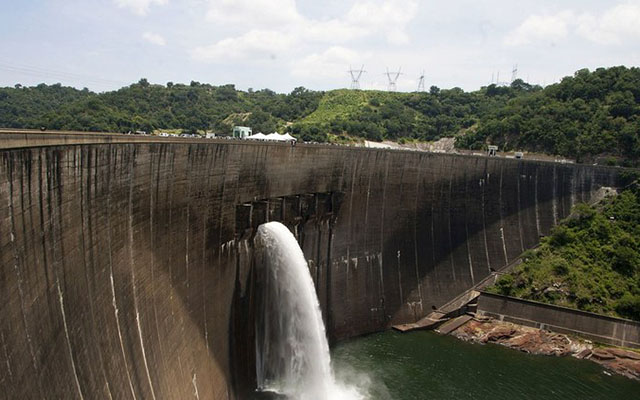Kariba South extension now producing 150MW
Golden Sibanda Senior Business Reporter
ZIMBABWE has started generating 150 megawatts from the newly completed first unit of the Kariba South extension project after the Zimbabwe Power Company on Monday commenced a seven-day test run of the 300 megawatt power station.
The initial 150MW will come from Unit 7 of the Kariba South extension project while a further 150MW is expected to come onto the grid, from Unit 8, after mid-March next year, which will significantly increase Zimbabwe’s internal generating capacity.
Unit 7 went on line on the 22nd of this month and is now on load for a 7-day test period while being monitored and is already generating power, in line with the State power utility’s promise early this year of a “brighter” Christmas for power users. ZPC, the generating arm of State-owned utility, Zesa Holdings, public relations executive Fadzai Chisveto confirmed yesterday saying the “7-day test run commenced today at 04:00 hours.” Only after a successful test run will the plant be commissioned.
“Commissioning will be done after relevant consultations have been concluded. Unit 7 is Zesa’s present to the people of Zimbabwe,” Zesa spokesperson Fullard Gwasira said this week.
Chinese company, Sino Hydro, is undertaking the extension project with the total project cost estimated at $533 million.
The Kariba South extension project means that Zimbabwe would now generate 1 050MW from Kariba South where it already had another 6 power generating units each with capacity of 125MW. The extension project forms part of a series of power initiatives Zesa is working on as part of its efforts to resolve a debilitating power deficit in the country currently mitigated through imports.
Zimbabwe requires 1 400MW, but can only produce an average of 1 000MW due to limited capacity emanating from unreliable old plants and lack of new investment since the mid 80s. As a result of the acute power shortage, Zimbabwe spends between $7 million and $10 million on imports each week.
This is despite the fact the country is battling a serious shortage of foreign currency, especially the US dollar, at a time the $14 billion economy is starved of meaningful foreign direct investment and adequate inflows of foreign earnings from exports. Due to shortages of foreign currency, Zimbabwe raked up over $40 million in arrears to Eskom of South Africa from power imports.
Demand for power is anticipated to significantly scale up when the economy starts performing at optimal levels when it recovers from nearly two decades of meltdown, which decimated about 50 percent of the gross domestic product (GDP).
As such, Zesa has also lined up $1,5 billion Hwange Power Station Units 7 and 8 expansions, which will also be undertaken by Sino Hydro. Although Hwange, the last major power station to be built by Zimbabwe, has installed capacity of 920MW, it averages below 500MW due to its antiquated state.
Zimbabwe has another opportunity to significantly increase reliable internal generating capacity when jointly with Zambia they complete the 2 200MW Batoka Gorge hydro power project.
Sourcing of the requisite funding for the project has already started. Further, the power utility awarded tenders to three companies for the construction of three solar power stations each with capacity to generate 100MW. Government, through the Zimbabwe Energy Regulatory Authority, has issued over 30 licences to independent power producers to build plants.









Comments